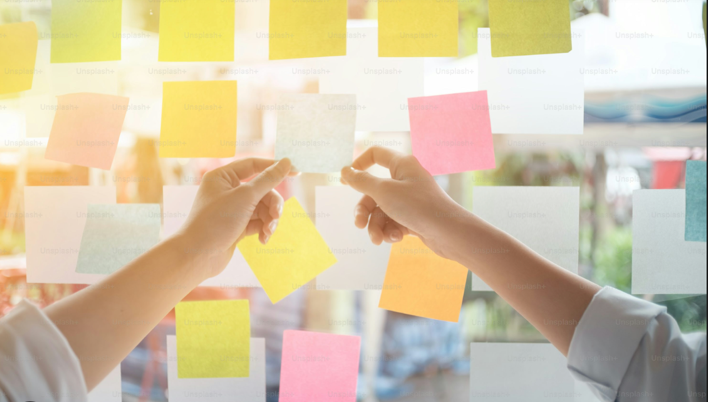Phase 2: Curating Stories
In this step of community reporting, trainer engages a (collective) story analysis. This means that the collected stories are listened to or looked at in small(er) groups. We may call this phase also story analysis or collective story analysis. Doing the story curation together is a particularly strong way of creating awareness of different viewpoints in the group.
Material:
A Story analysis sheet. Please make the story analysis sheet on paper, so that participants can fill them out easily. The following elements should be written on it:
· A title box:
· A summary box, mentioning the following questions: What is the story about? What events or situations do they describe? Describe how they feel and add any key opinions.
· A quote box for at least two quotes of 30 seconds (max): Please mention the exact time in the audio or video. Give a summary of the quote in a couple of lines. If there was no video or audio recording, please write down a quote of what was said orally or written on paper.
Step 2 Story Curation - Community Reporting by People's Voice Media
Step by step:
1. Look, listen or watch the stories you collected in small groups.
2. Make an analysis of one of the stories together by filling out the sheet. Give a title to the story, Write down in a few lines what the story is about. What events situations do they describe? (Think of where the activity takes place, what is the main topic or problem they describe, who is involved, how do they feel and what are their opinions?
3. Write down exact time slots of two quotes (max 30 seconds) characterizing the heart of the story best. Write a short summary of these quotes.
Afterwards you may use the quotes to compile a new story, based on these quotes as a new story, an account (see phase 4)
4.discuss in plenary session what you found out through listening, watching, looking at the stories. What did you feel while doing it? What learnings did you take from doing this?
Flipover papers on a wall
Yellow sticky notes of if you work online you may use a flinga board https://flinga.fi/s/FB4TGPZ
 After having discussed in general what came out of the analysis and curation phase, you ask the participants to come back to the story analysis they did together and bring together the findings in a pragmatic way.
After having discussed in general what came out of the analysis and curation phase, you ask the participants to come back to the story analysis they did together and bring together the findings in a pragmatic way.
Come back to the starting question, the purpose you had for telling and sharing these stories.
Define topics you wish to compare the story contents upon and define some questions.
Have the participants answer the questions in their small groups and write it down on sticky notes and order them on a big wall paper or on the wall itself.
After having done the analysis of all the stories together, you may cluster the topics and find out together what comes out as general issues, what similarities and differences exist between the stories and view points people shared.
Discuss in the consequences of what you found. What obstacles are visible? What new perspectives are evolving? What should be changed? And who should know about the findings out of the stories?
Decide about a follow up. How to mobilize these stories and organize conversations of change with all people involved and based on the stories that people shared about their lives? How to engage the stories for narrative accountability purposes and making a collective narrative account?
5. Trainer Collects the story analysis sheets and checks whether all audio, video, written. photos or art work stories are in your possession or at least a part of it.

